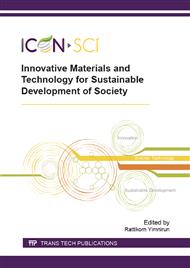p.195
p.199
p.203
p.209
p.213
p.217
p.223
p.227
p.231
Needleless Electrospinning of Silk Fibroin/Gelatin Blend Nanofibres
Abstract:
In this study, nanofibres consisting of silk fibroin (SF) and gelatin (GP) with different composition ratio were fabricated by needleless electrospinning method. The influences of SF/GP blending ratio on the properties of spinning solution and the morphology of electrospun fibres were investigated. A variety of compositions of the silk fibroin/gelatin blend solutions were successfully electrospun into nanofibres sheet. The morphology of electrospun fibre was characterized by a scanning electron microscope (SEM) which indicates that the morphology of obtained fibres was influenced by the weight ratio of gelatin to silk fibroin in the spinning solution. It was observed that the blending ratio of gelatin to silk fibroin in spinning solution played an important role in spinning performance of the process and the diameter of obtained fibres. An increasing in gelatin content in blended solution resulted in bigger diameter of the obtained electrospun fibres. The silk fibroin/gelatin electrospun fibres had diameters ranging from 200 to 660 nm.
Info:
Periodical:
Pages:
213-216
Citation:
Online since:
October 2015
Authors:
Keywords:
Price:
Сopyright:
© 2015 Trans Tech Publications Ltd. All Rights Reserved
Share:
Citation:


